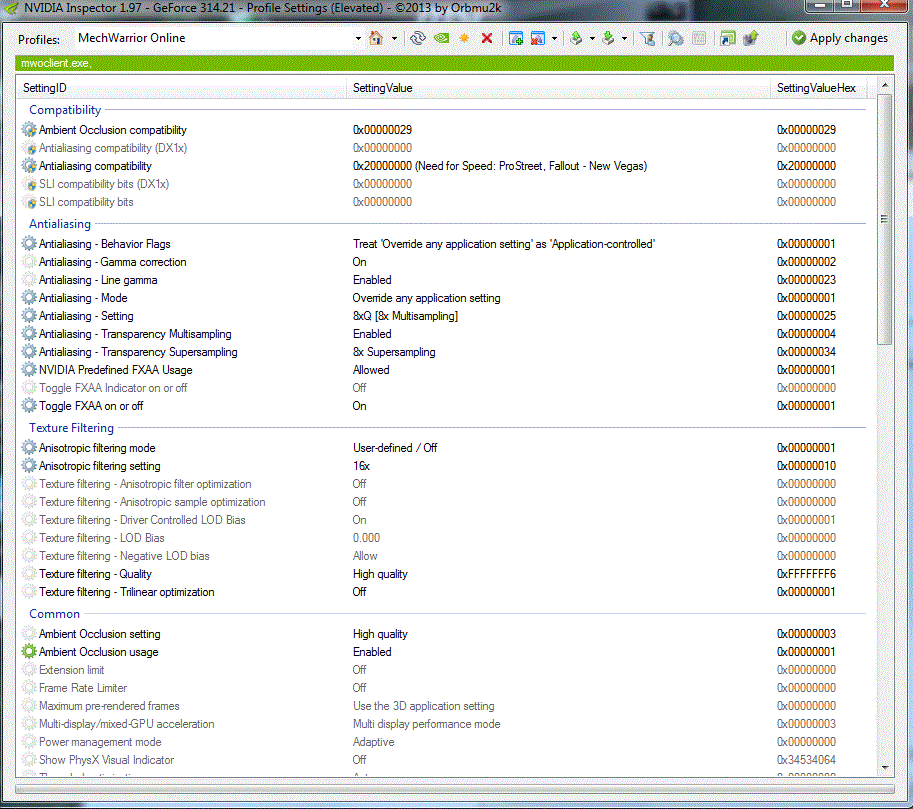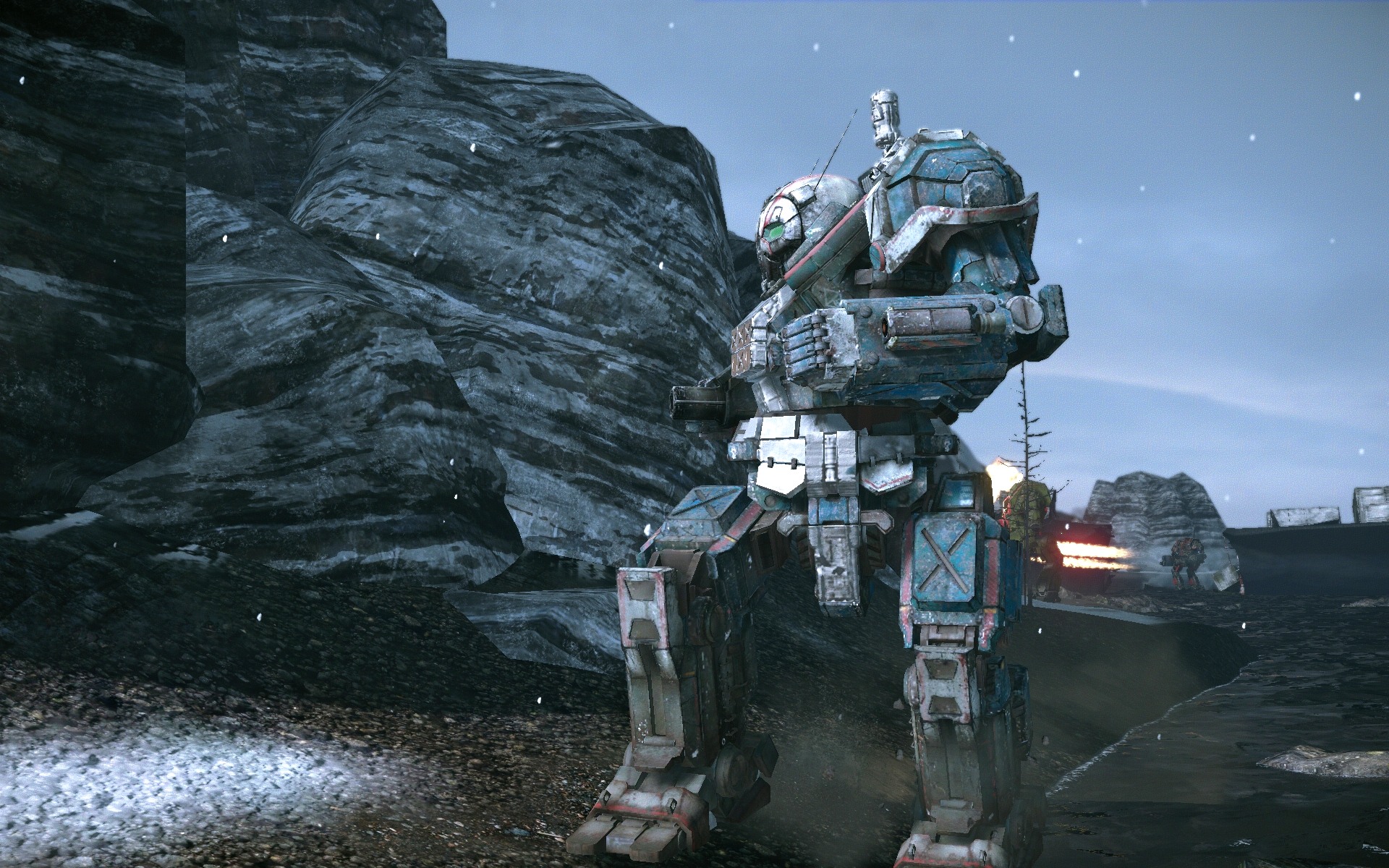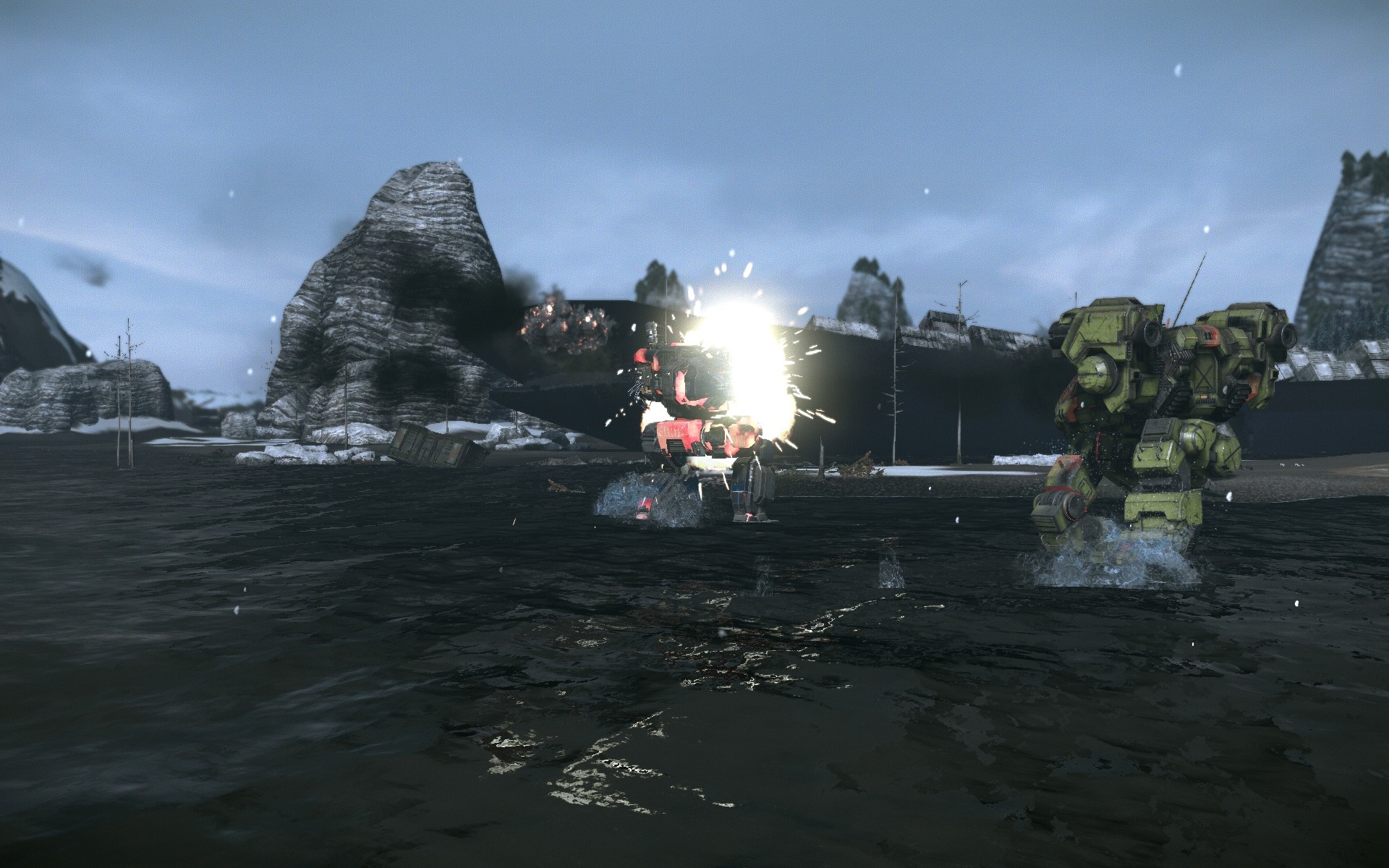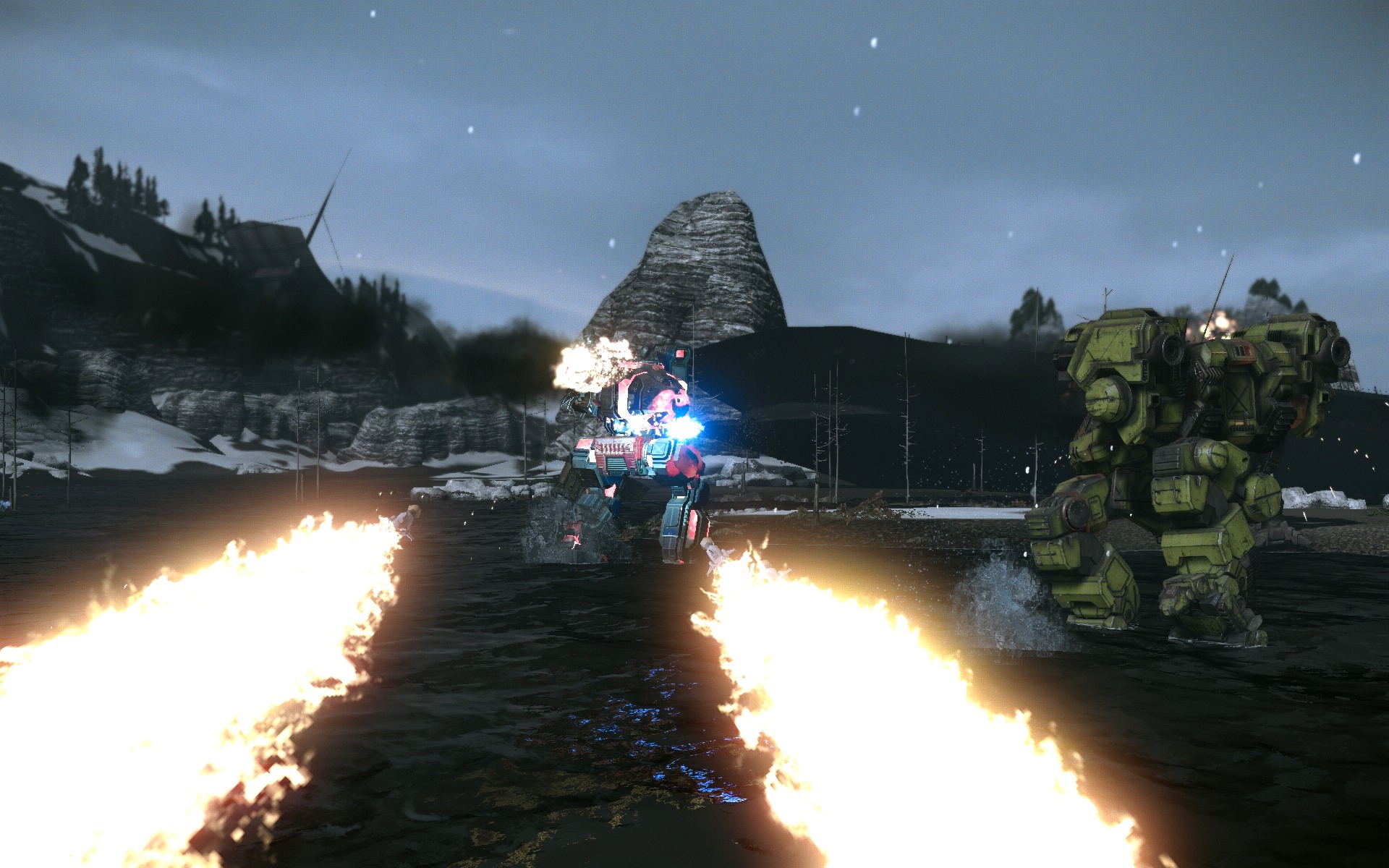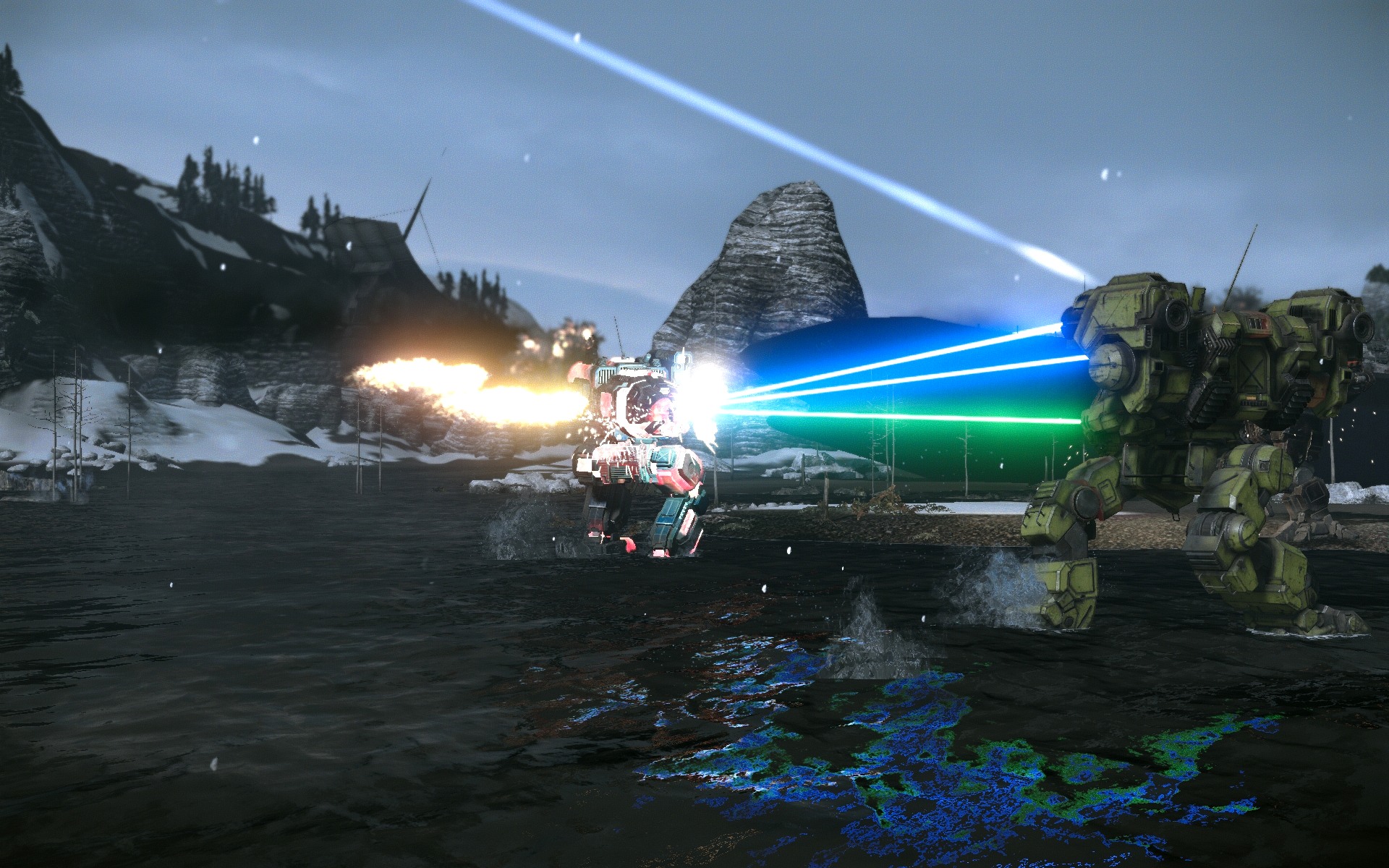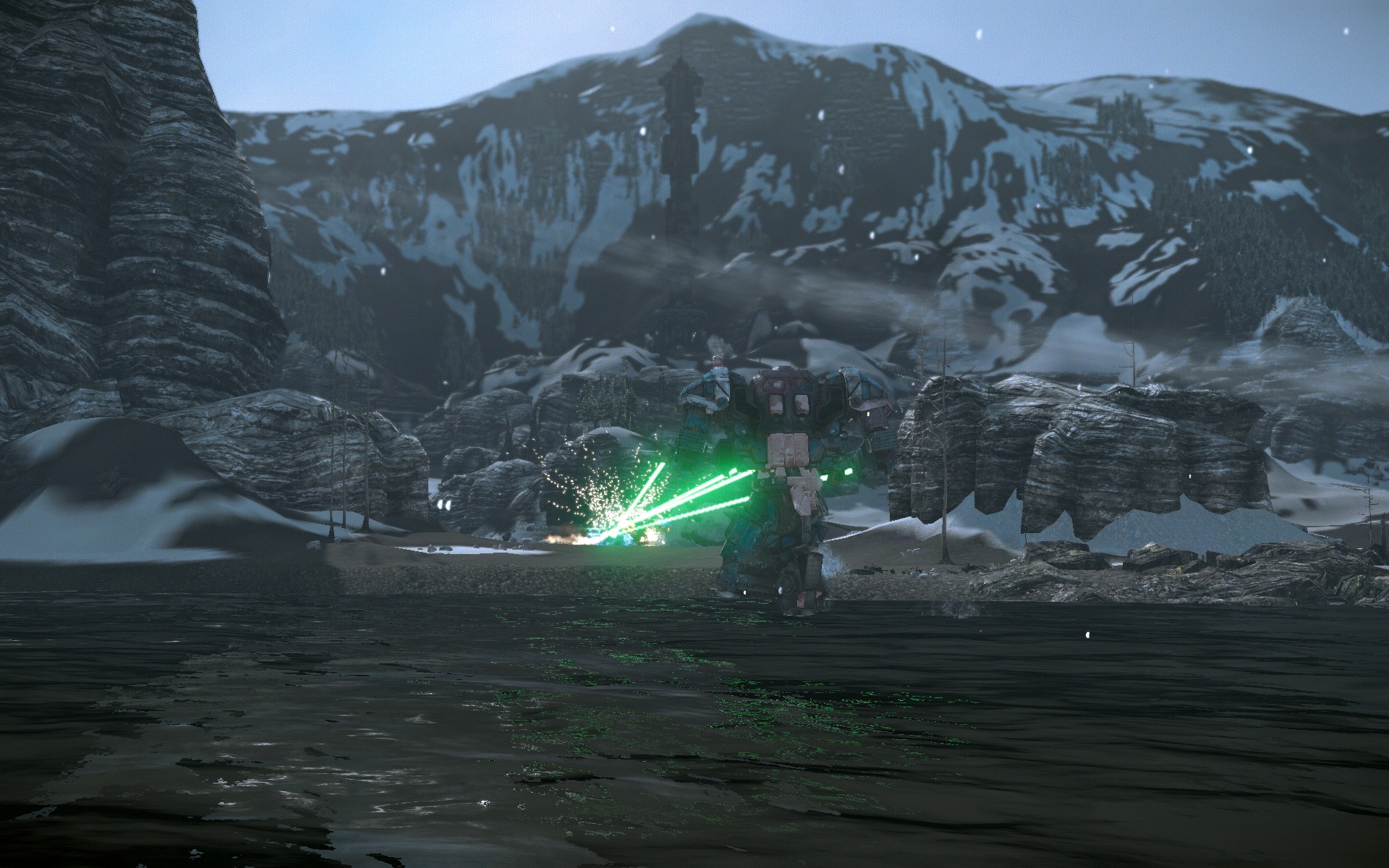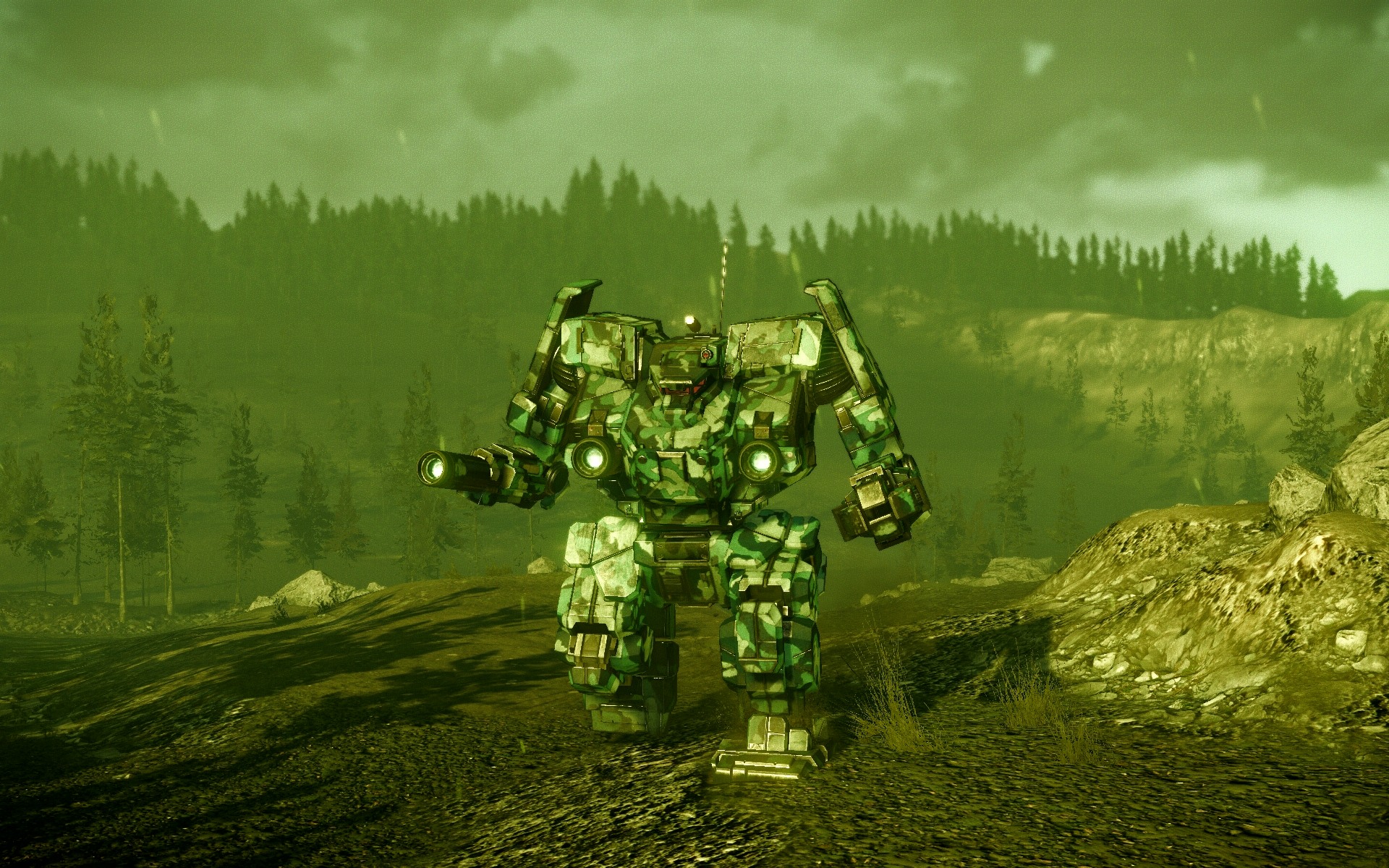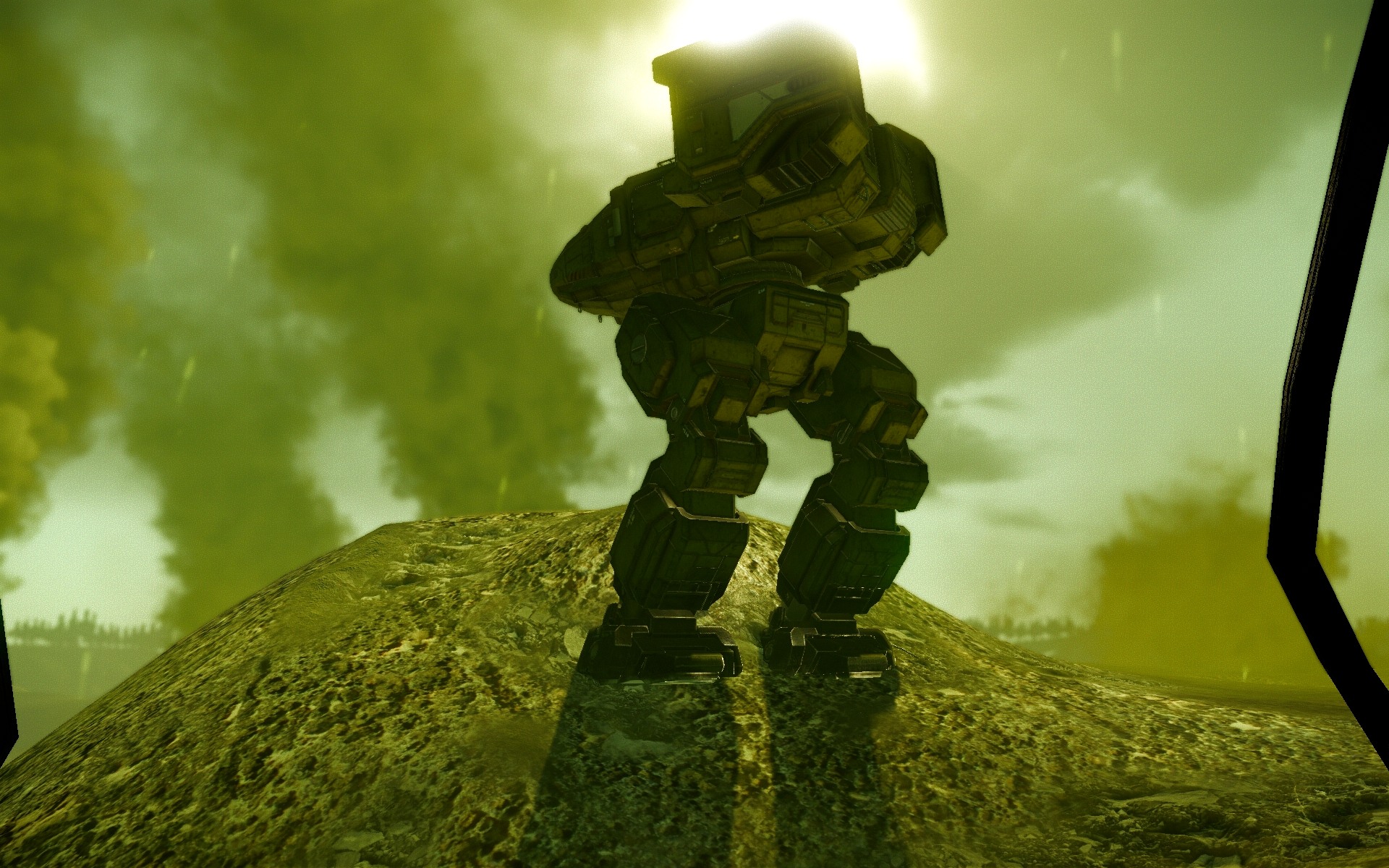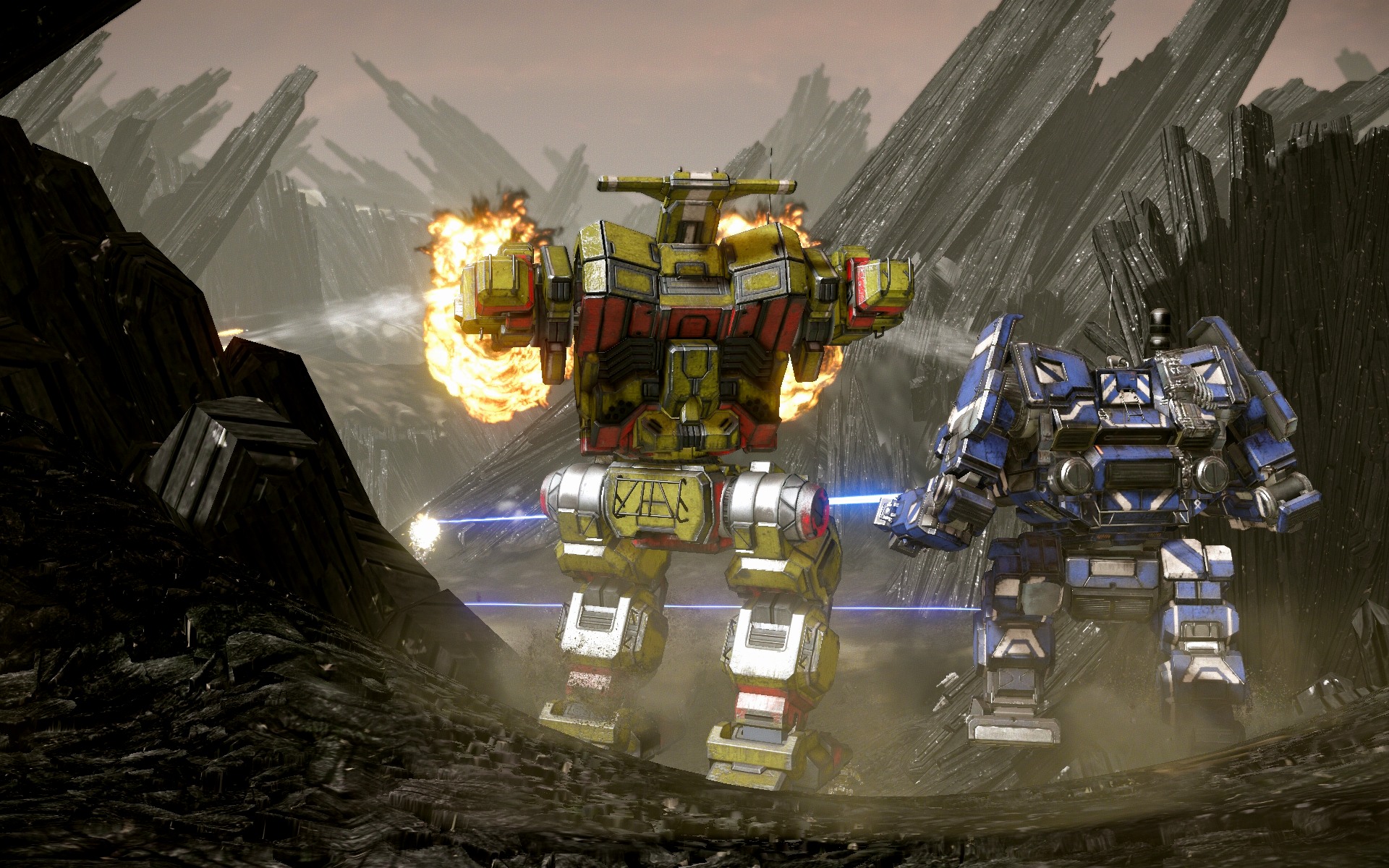 Magnakanus, on 08 April 2014 - 03:53 AM, said:
Magnakanus, on 08 April 2014 - 03:53 AM, said:
Hey Craig,
you and I often stand on opposite sides of the argument. I actually liked your post, it was well worded and cordial (for the most part).
As to sample pool numbers; since we have no official stats one way or the other any conjecture in either way is mainly that, conjecture. Trusting what the official communications say, especially after our objective measurement tool called player count was removed, in light of the consistency track record PGI currently holds, is a bit utopian IMHO. I am not saying that nothing they say can be trusted, but they have managed to downgrade themselves from "trust until proven untrustworthy" to "seeing is believing". So if you decide that you can't entirely trust what is being published for whatever reasons, the only remain source you have left is what you and others have experienced first hand (e.g. "anecdotal"). Reality is in the numbers and even I can attest to the fact that many in my and other units I work closely with have left for the reasons Roadbeer has stated. so I can at least trust in the factual numbers I know to be true through personal observation. Couple this with one of the many the laws of human nature, that in a given test population a specific situation will provoke on average (bell-curve) a specific response (e.g. groups reduced to 4, people leave), I have no reason to doubt that what I have personally witnessed in some units is happening in others.
Now, how many new players we get or not and how many of those stay for more than 25 games (and thus can be counted towards any current drop pool calculations) is also pure conjecture since again we have no stats on this, just an "official statement" to the contrary. Again, human nature is such that if a business is loosing ground, those responsible will not say as much because of the usual fear is that the rest of the rats will jump ship as well (CYA 101). So the only way to really settle this is to either have factual numbers gathered in a predefined time frame with enough complimentary information (e.g. games played, last logged in, etc.) to make the information objectively useful, or to rely on first hand "anecdotal" information. Since we don't have the former we are forced to rely on the latter.
Going back to the statement that was made; 84% were solo drops and 16% were group drops and that the stats were drawn from "the life of the game" (does this also included CB?). We still do not have the perspective here as to how many were people that jumped in, did 25 drops and then left because they did not like the game or could not handle it. Nor do we have numbers on people that used to play in a unit but can't anymore because their unit has lost too many players to be able to field teams consistently. Using the same numbers you did (accepting that these are purely fictitious numbers as you stated) you have 100k team-players and 900k new F2P players (10% team-players, 90% F2P). For 100k team-players to get 16% of the drop pool numbers vs. the 84% 900k F2P, Each team-players has to drop roughly 6 times for every 1 that a F2P player does. So yes, more drops are done as a solo, but the team-players on average drops more often (in this example). This is really why without any true context the numbers PGI states are worth less than used toilet paper. Yes, they are numbers that were pulled up from some system, but without context they can be viewed 100 different ways and mean just about anything.
Another assumption you made (again not harping for confrontation so skip if necessary) was that founders are not buying new mechs etc at the same ratio a true F2P player is (my interpretation, feel free to contradict/correct).
I contend that assumption on the basis that a Founder or other BT fan is more willing to spend money on mechs because of their love of the IP (case in point the Urbanmech, people pettioned for it and practically offered their first born). A player who has no background with the IP will base their decision to spend money without this "positive bias". Combine this with a steep learning curve for the game, let alone people who logged in expecting Titanfall/etc. and left immediately afterwards because MWO was not it, those new F2P players are markedly less likely to spend $$ on MWO. A Founder and other BT fans are more emotionally invested in the IP and thus more likely to spend $$ on MWO, especially since no new BT title has turned up in years, especially since "hope for the future" is an emotion that leads one to do things your intellect would not have you do otherwise.
Moral of the story;
1) Anecdotal data (first hand experience) is greater than "proven less than trustworthy statements and stats".
2) Statistical data has no value when not released with sufficient information on parameters and complimentary info.
3) Emotionally investment promotes financial investment. Casual interest reaps sporadic financial investment which is heavily based on the "wow factor" (how much does MWO have for the random F2Player?).
2 closing questions form me:
1) How much trust are you placing in the data that PGI has published, in particular the 84/16% numbers, but also in numbers published by PGI in general?
2) Do you feel that the 84/16 represents the player base (more or less) consistently throughout the life of MWO or have you noticed any major fluctuations?
LOL, I thought everyone was one the other side to me?

jk.
So firstly, the problem with relying on anecdotal evidence is while it is relevant to the owner, its not representative. So for example, an allegation is that the game is hemmaroging team players, I've seen it many times in forums and there are some teams that are down in numbers. The finger for this problem is firmly placed on PGI, and their inability to provide a team based game.
But thats just not always the case. Some teams die because they have rubbish leaders (We've all seen it several times) some die because they follow a charismatic member to another team. Some die because life gets in the way. Theres a multitude of reasons why it could be the case that players leave a guild. We can argue that PGI has an influence, but it's alarmist to say it's all PGI's fault.
Want a MW:O example, theres a thread over in Clan Wolf I chipped in on where a guy basically left a Guild and posted he was looking for another one. It looks like he never told his old guild why he was leaving, and so when they came across the thread they chipped in. Now details to one side, anecdotally that Guild Master saw a player had left, and if he hadn't shown up on the forums, he never would have known anything more than he left. It was not PGI's fault though, the guy was still looking for a new guild to play with.
My comparison of founders to a full F2P player was not to make an argument about the economic viability, but merely to demonstrate their is a different behaviour (in game activity) driving different demographics of the player base.
So to address your points.
1) Anecdotal data (first hand experience) is greater than "proven less than trustworthy statements and stats".
Yes, but anecdotal evidence is limited and care needs to be exercised when coming to conclusions and requesting amendments. In short, if you're relying on anecdotal evidence you need to spend a lot more time putting yourself (and asking questions of) on the other side to quantify your experiences.
2) Statistical data has no value when not released with sufficient information on parameters and complimentary info.
Yes, data for the sake of data is useless, but perhaps more importanly it also needs context and interpretation. The problem is the vast majority of people don't have that ability (it's actually a marketable skill, Investment firms pay big bucks for interprative abilities) and so simply releasing data creates more problems than it solves.
To use a military analogy, I can show you a radar screen which has three blips on it, now you have seconds to determine how many are threats inbound, how many are civilian traffic, when the threat (if any) becomes material and a real risk to us. You also need to mark those risks for engagement and communicate all you conclusions to the CO before the scenario changes. It's not enough to read the data or even to know which one / two / three are the possible threats. For the info to be useful you have to interpret it and make judgements. They train them RO's for a reason you see
 3) Emotionally investment promotes financial investment. Casual interest reaps sporadic financial investment which is heavily based on the "wow factor" (how much does MWO have for the random F2Player?).
3) Emotionally investment promotes financial investment. Casual interest reaps sporadic financial investment which is heavily based on the "wow factor" (how much does MWO have for the random F2Player?).
Sure, subject to volumes. If I spend $100 a year on MWO over 5 years it's $500-, if they get 200 people joining the game every year spending $10 each (assuming no cost per player) you're financially much better off. Whether they stay for 6 months or 12, as long as they pay their 10 dollars the financial aspect is covered. But yes, if you could get them ALL to stay longer and ALL spend more money, of course thats "better".
2 closing questions form me:
1) How much trust are you placing in the data that PGI has published, in particular the 84/16% numbers, but also in numbers published by PGI in general
Trust? Well I trust they believe the numbers are right and it has some basis. I don't think there made up and I don't think they are deliberatly misleading. The company is registered and has to meet certain regulatory requirements including ethics. It also commercial suicide to deceive markets and investors. There is always a risk of fraud, but the numbers involved in MW:O are very very large. I am comfortable strong due diligences have been done on the people and the company and they passed. I will caveat here and say this observation is a response to your question of Trust only.
2) Do you feel that the 84/16 represents the player base (more or less) consistently throughout the life of MWO or have you noticed any major fluctuations?
What PGI said is that it's the average over the life of the game. I strongly suspect that it is slanted that way, but probably not to the same degree as the headline numbers. If I was a guessing man I'd say its probably closer to 70% solo and 30% teams (personal opinion, no substantiation, see below).
I'll expand in anticipation of the flame war about to erupt.
Most MMO games cater to individual players and smaller teams. Look at the RPG ones the missions are mostly 4 / 5 man, Dota and games of that ilk are the same. This is (imo) cause its damn hard to co ordinate bigger teams as a physical presence. Big teams with long running missions are very few in popular titles. You just don't see 100 man raids being launched every 30 minutes in MMO games (not withstanding the hype).
Also, the factor I touched on above. There are more players in the game now than there were 12 months ago, and those players have different needs. They are not the dedicated BT Lore purists that want a canon experience. They will drive a different in game behaviour. Ergo, they're behaviour will dilute the "Team Play" stats that were once prevelant.
If you look through the threads you will see people acknowledging they are "plug and play" (my word) players. They want their 1 hour fix before dinner / gf comes over / go to the pub / <insert all other here>. They don't want the hassle or commitment of linking up with freinds on line, that will cramp their other timelines. The want to blow *proverbial* up and get on with it. In my world, thats about 90% of my freinds and I guarantee you, that demographic is woefully un represented in forums. This is the last place they are coming. They are solo dropping, or at best with their brother, SO, family member <insert close rl relation here>.
I'll never have the actual stats from PGI, but I my best guess factoring in those three things is that the majority of the player population is Solo or small groups, its the major demopgraphic in other games and its what I see in my own environment. How did I get to my guess, I doubled the official number, it's a practice that has served me pretty well over the years when I doubt stats.
I just cannot see that MW:O is going to be so different from any other MMO player population. For example, arguably the most well known and regarded fantasy universe is D&D, Forgotten Realms. Neverwinter rolled out a few months back. It has a solo game content of about 60 hours, and 5 player team content that will keep you 30 minutes to an hour and a 20+ (per side) game mode (which runs for about an hour+, not that I have ever actually played that mode) which I find is empty unless our Guild has organised a run against another Guild. It's just harder to keep teams larger than 2/3/4 together for any length of time.
Accordingly, I have to accept that I am in the minority (although as I said, I don't think its a 16% minority). I have 7 friends that I played TT BT with for many years and we are still in contact even though we have all split up. I would love nothing more for all of us to use MW:O to recreate some fond memories. but it doesn't. Neither did MW 2/3/4 so I continue to wait for that opportunity / title. We make the most out of MW:O when we can in drops of 3 or 4 and even that is hard to co ordinate so we'll have to see.
 Craig Steele, on 07 April 2014 - 09:54 PM, said:
Craig Steele, on 07 April 2014 - 09:54 PM, said: Craig Steele, on 07 April 2014 - 09:54 PM, said:
Craig Steele, on 07 April 2014 - 09:54 PM, said:
 This topic is locked
This topic is locked





